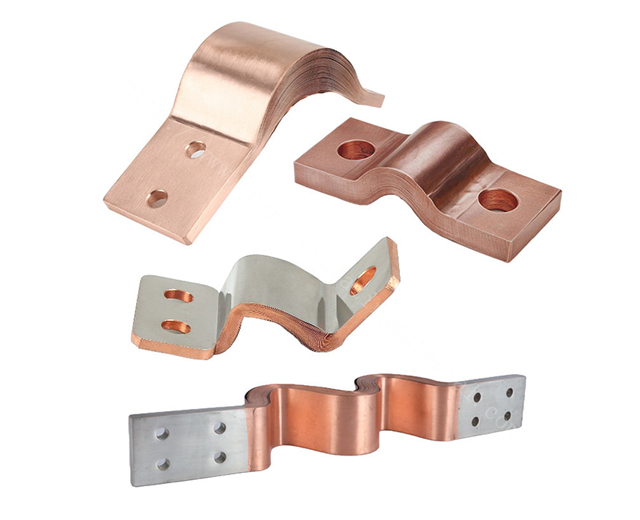2025-11-07 10:25:39
In modern electrical engineering, busbar systems play a key role in efficient and reliable power distribution. Whether in power substations, industrial switchgear, data centers, solar energy systems, or battery energy storage, a well-designed busbar system ensures safe and stable current flow.
This article explains what a busbar system is, how it works, the different types of busbars, advantages, installation considerations, and common application fields.
We will also compare copper busbar, aluminum busbar, Flexible Busbar, Solid Busbar, low-voltage busbar, and high-voltage busbar solutions to help buyers and engineers choose the right product.

A busbar system is an electrical power distribution framework that uses flat metal conductors—called busbars—to collect and distribute electrical current.
Instead of using multiple cables, a busbar system centralizes power transmission through solid or flexible metal bars, which reduces resistance, heat generation, and installation complexity.
A busbar system is a configuration of conductive metal bars that provides an efficient way to transmit and distribute electrical energy within a power system.
The primary function of a busbar system is to:
| Function | Description |
|---|---|
| Collect Current | Gathers current from power sources such as transformers, inverters, and battery packs. |
| Distribute Current | Delivers power evenly to circuits, loads, and electrical equipment. |
| Reduce Power Loss | Offers lower resistance than cables, improving efficiency. |
| Increase Reliability | Uses fewer connection points, reducing failure risks. |
| Support System Expansion | Easily allows additional loads and circuits to be connected. |
A busbar system works as a central electrical highway.
Power enters the busbar, flows through the electrical bus bar, and is distributed to different branches of the system.
Busbar connections may be bolted, welded, laminated, or flex-linked depending on the current rating and mechanical structure.
High conductivity
Low electrical resistance
Excellent thermal stability
Used in power plants, substations, and heavy-duty systems
Examples: Solid Copper Busbar, Flexible Copper Busbar, Laminated Copper Busbar
Lightweight
Cost-effective
Suitable for medium and low-voltage distribution
Examples: Flexible Aluminum Busbar, Solid Aluminum Busbar
| Busbar Type | Description | Typical Use |
|---|---|---|
| Solid Busbar | Rigid copper or aluminum bar | Switchgear, Main power centers |
| Flexible Busbar | Braided or laminated copper/aluminum for vibration tolerance | EV battery packs, transformers, UPS, automation |
| Insulated Busbars | Busbars covered with PVC, epoxy, or heat-shrink insulation | Compact panel systems, safety-critical environments |
| Low Voltage Busbar | Rated below 1kV | Buildings, industrial panels |
| High Voltage Busbar | Rated above 1kV | Power grids, substations |
| Power Distribution Busbar | Distributes power to multiple circuit branches | Commercial and industrial electrical rooms |
A complete busbar system includes:
Busbars (copper or aluminum)
Insulators / Busbar Support Insulators
Conductive connectors
Protective insulation (for insulated busbars)
Mounting hardware
Heat management components (optional)
| Advantage | Benefit |
|---|---|
| High current carrying capacity | Supports large industrial loads |
| Lower electrical losses | Improved energy efficiency |
| Compact installation | Saves panel space vs. multiple cables |
| Higher safety | Lower overheating and fire risks |
| Easy expansion and maintenance | Convenient for upgrades and repair |
| Better system stability | Reduced voltage drop and noise interference |
Busbar systems are widely used in:
Power Substations & Power Grids
Industrial Control Panels
Commercial Buildings
Data Centers & Server Racks
Battery Energy Storage Systems (BESS)
Electric Vehicles and Battery Packs
Solar Energy Systems & Inverter Panels
Marine and Aviation Power Distribution
| Requirement | Recommendation |
|---|---|
| High conductivity | Solid Copper Busbar |
| Cost-effective large system | Solid Aluminum Busbar |
| Compact panel or vibration environment | Flexible Copper Busbar / Flexible Aluminum Busbar |
| Safety-critical or compact layout | Insulated Busbars |
| Large power distribution rooms | Power Distribution Busbar |
| Utility-scale HV installations | High Voltage Busbar |
A busbar system is essential for efficient, safe, and scalable power distribution in industrial and commercial electrical networks.
By selecting the correct copper busbar, aluminum busbar, flexible busbar, or solid busbar, engineers can optimize performance, reduce heat, and extend equipment life.